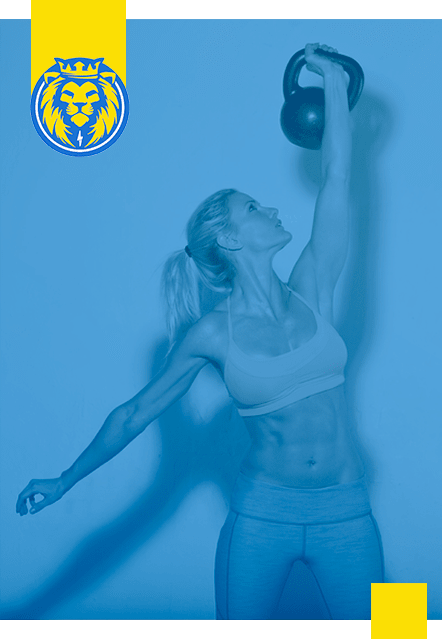
What Is Functional Training?
Years ago, the term "functional training" became a buzzword in the fitness industry. Trainers and fitness enthusiasts alike latched onto the concept, often without fully understanding what it actually meant. But functional training isn’t just another trend—it’s a methodology rooted in training the body to perform the movements and tasks you encounter in real life.
So, what is functional training, really? The answer depends on what "function" you’re training for.
Functional Training Defined: Training for Purpose
At its core, functional training means designing exercises to enhance your ability to perform specific functions or tasks. For example:
- If you’re training to jump higher, functional training incorporates exercises that mimic the movement pattern of jumping and strengthen the muscles involved in jumping.
- If your goal is to improve your ability to pick up heavy objects (like carrying groceries or lifting your kids), functional training focuses on movement patterns like squatting, hinging, and carrying.
The exercise itself isn’t what makes training “functional.” It’s how the exercise supports the movement pattern or goal that defines functional training.
The Evolution of Functional Training
When functional training first gained popularity, it took on a life of its own. Instead of being solely about training for specific functions, it became more about the programs themselves. Fitness professionals began promoting the concept as a one-size-fits-all solution, which, while not entirely accurate, sparked a positive shift in the industry.
The result? We started to better understand:
- How to train the body for human movement and performance.
- How to move beyond isolated exercises to focus on movement patterns.
This shift laid the foundation for modern training programs that prioritize not just aesthetics but also mobility, strength, and functionality.
Functional Training and Human Movement
Functional training is about training for life—building strength, mobility, and coordination that help you perform better in everyday tasks and activities. Let’s break this down:
Movement Patterns Over Muscles
Traditional training often focuses on individual muscles (e.g., biceps, quads, hamstrings). While there’s value in isolating muscles, real-world activities rarely involve just one muscle working in isolation. Functional training emphasizes movement patterns such as:
- Squatting (e.g., sitting down and standing up)
- Hinges (e.g., bending over to pick something up)
- Pushing (e.g., opening a heavy door)
- Pulling (e.g., carrying groceries or pulling yourself up)
- Rotations (e.g., twisting to grab something from behind you)
By training these patterns, functional exercises mimic the way your body moves in real life, helping you perform better while reducing the risk of injury.
Why Functional Training Matters
If we take a closer look at elite athletes, it’s clear that they don’t just move efficiently—they also have physiques that most people admire. Their training programs are designed to improve performance, but as a result, they also develop lean, muscular, and balanced bodies.
Functional training allows everyday individuals to achieve similar results by focusing on the following:
1. Improved Mobility and Flexibility
Functional training incorporates movements that improve range of motion and joint health. This allows you to move freely and without pain, whether you’re on the field, in the gym, or going about your daily life.
2. Better Strength and Performance
Unlike isolated exercises that work one muscle at a time, functional exercises recruit multiple muscle groups, improving overall strength, power, and coordination. This translates into better athletic performance and greater ease in daily activities.
3. Reduced Risk of Injury
By strengthening muscles in ways that mimic real-life movement, functional training helps you build resilience and stability, reducing your risk of injury both in the gym and out.
4. A Balanced, Athletic Physique
Functional training focuses on movements, not just muscles, which helps you build a body that’s not only strong but also balanced and aesthetically pleasing.
Why Training Like an Athlete Is the Goal
Athletes are the epitome of functional training. They train for performance, but the results often include:
- Incredible mobility and flexibility.
- Strength and power that translates into their sport or daily life.
- A lean, muscular physique built through compound, functional movements.
Instead of focusing on individual muscle groups, athletes focus on how their body works as a whole. The takeaway? Training like an athlete doesn’t just make you move better—it makes you look better, too.
Functional Training in Practice
So what does functional training look like in practice? It might include exercises like:
- Squats: A foundational movement pattern for strength, mobility, and balance.
- Deadlifts: Building functional strength for picking up heavy objects safely.
- Push-Ups or Bench Press: Training the pushing movement used in countless real-world scenarios.
- Rows or Pull-Ups: Strengthening pulling muscles to improve posture and functional strength.
- Rotational Exercises: Building core strength and improving the ability to twist and turn effectively.
The beauty of functional training is that it can be customized to fit your goals, whether that’s improving athletic performance, building strength, or simply moving better in daily life.
How Legacy Personal Training Makes Functional Training Work for You
At Legacy Personal Training in Scottsdale, we believe that functional training is the cornerstone of a well-rounded fitness program. But we don’t just throw random exercises at you and call it functional training. Our approach is:
- Personalized: We design programs tailored to your specific goals, whether that’s improving mobility, building strength, or enhancing performance.
- Movement-Focused: We assess how you move and create a program that strengthens movement patterns, reduces pain, and improves functionality.
- Effective and Efficient: Every workout is designed with purpose, maximizing your time and effort in the gym.
Functional training isn’t just about looking good—it’s about building a body that can handle whatever life throws at you. Why wouldn’t you want both?
Ready to Move Better, Feel Better, and Look Better?
At Legacy Personal Training in Scottsdale, we specialize in creating personalized programs that help you build strength, improve mobility, and achieve the lean, athletic physique you’ve always wanted.
Legacy Personal Training proudly serves Silverleaf and the North Scottsdale community.
Schedule a consultation today and discover how functional training can transform the way you move, perform, and feel every day.

